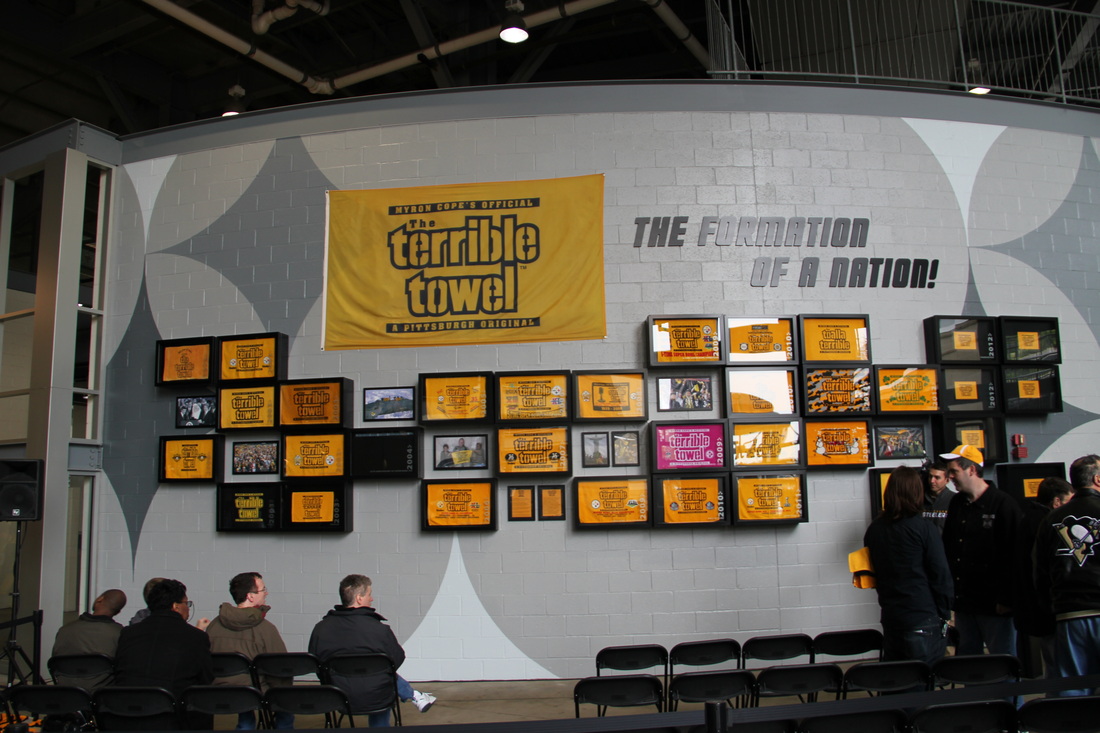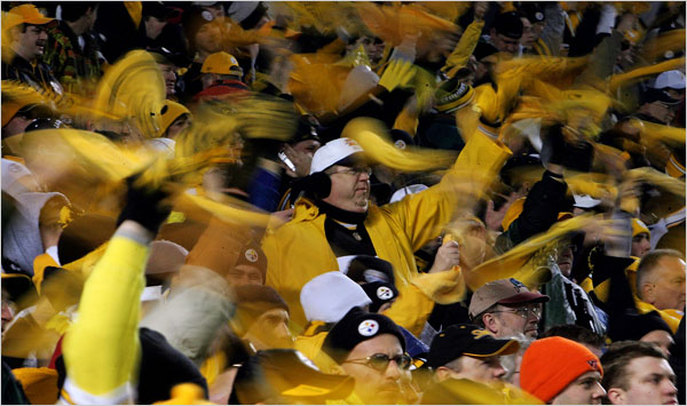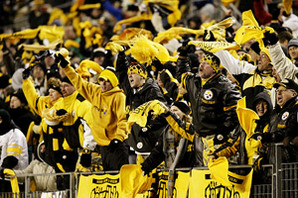Pittsburgh Steelers fans are recognized all around the world by the waving and twirling of the most iconic such item in all of sports, The Terrible Towel. To honor the history of it, the team has unveiled The Terrible Towel Wall in Heinz Field’s Great Hall.
“The Terrible Towel Wall is a great way to display and preserve the many versions of The Terrible Towel,” said team president Art Rooney II. “It makes a great addition to the Great Hall at Heinz Field, and I’m sure that our fans will enjoy recalling at the history of The Terrible Towel.”
The new addition to the Heinz Field experience chronicles the origin and evolution of The Terrible Towel, as well as all of the different variations since its birth prior to the 1975 AFC Divisional Playoff game against the Baltimore Colts. Additionally, The Terrible Towel Wall has a display of the many unique locations where The Terrible Towel has been photographed with fans.
The Terrible Towel was created by the late Myron Cope, who served as the Steelers’ color analyst for 35 years on the team’s radio broadcasts. Certain proceeds from The Terrible Towel have been able to benefit the children and adults at the Allegheny Valley School, a charity that had special meaning to Cope.
“The Terrible Towel’s long history and the spirit it brings to the Steelers Nation is phenomenal,” said NHS Allegheny Valley School’s Chief Development Officer Dorothy Hunter Gordon. “Since 1996, a portion of the proceeds from the sale of all officially licensed products supports the more than 900 children and adults with intellectual and developmental disabilities that we serve throughout Pennsylvania. We are so grateful for the legacy that Myron Cope entrusted to us, and we are thrilled that The Terrible Towel is being honored at Heinz Field.”
The Terrible Towel Wall will be on display during a dedication ceremony on Saturday, April 28, at 11:30 a.m. at the Steelers’ Fan Blitz, presented by Xfinity. Former Steelers’ linebacker Andy Russell and representatives from the Allegheny Valley School will be on hand at the dedication.
To purchase any of The Terrible Towels, fans are encouraged to visit www.steelers.com/catalog/TerribleStuff. For more history on The Terrible Towel, visit www.steelers.com/history/terrible-towel.html.
Terrible Towel Wall Photo Gallery
The Terrible Towel was designed by EchoArtz and fabricated/installed by Contemporary Design.
“The Terrible Towel Wall is a great way to display and preserve the many versions of The Terrible Towel,” said team president Art Rooney II. “It makes a great addition to the Great Hall at Heinz Field, and I’m sure that our fans will enjoy recalling at the history of The Terrible Towel.”
The new addition to the Heinz Field experience chronicles the origin and evolution of The Terrible Towel, as well as all of the different variations since its birth prior to the 1975 AFC Divisional Playoff game against the Baltimore Colts. Additionally, The Terrible Towel Wall has a display of the many unique locations where The Terrible Towel has been photographed with fans.
The Terrible Towel was created by the late Myron Cope, who served as the Steelers’ color analyst for 35 years on the team’s radio broadcasts. Certain proceeds from The Terrible Towel have been able to benefit the children and adults at the Allegheny Valley School, a charity that had special meaning to Cope.
“The Terrible Towel’s long history and the spirit it brings to the Steelers Nation is phenomenal,” said NHS Allegheny Valley School’s Chief Development Officer Dorothy Hunter Gordon. “Since 1996, a portion of the proceeds from the sale of all officially licensed products supports the more than 900 children and adults with intellectual and developmental disabilities that we serve throughout Pennsylvania. We are so grateful for the legacy that Myron Cope entrusted to us, and we are thrilled that The Terrible Towel is being honored at Heinz Field.”
The Terrible Towel Wall will be on display during a dedication ceremony on Saturday, April 28, at 11:30 a.m. at the Steelers’ Fan Blitz, presented by Xfinity. Former Steelers’ linebacker Andy Russell and representatives from the Allegheny Valley School will be on hand at the dedication.
To purchase any of The Terrible Towels, fans are encouraged to visit www.steelers.com/catalog/TerribleStuff. For more history on The Terrible Towel, visit www.steelers.com/history/terrible-towel.html.
Terrible Towel Wall Photo Gallery
The Terrible Towel was designed by EchoArtz and fabricated/installed by Contemporary Design.




 RSS Feed
RSS Feed